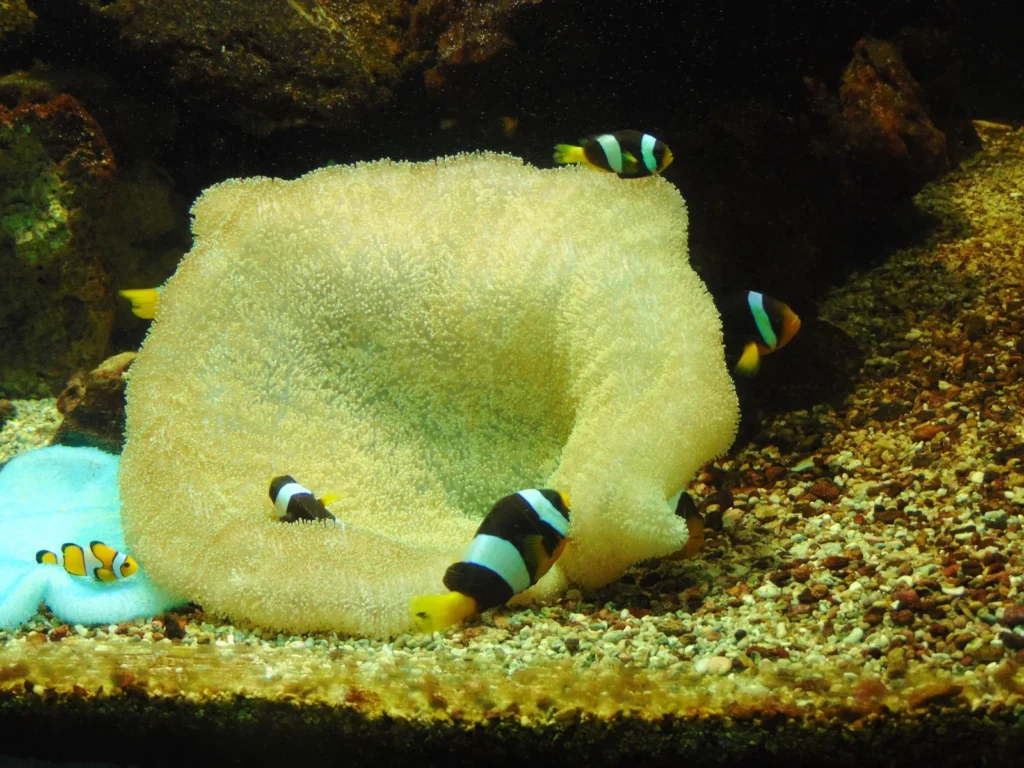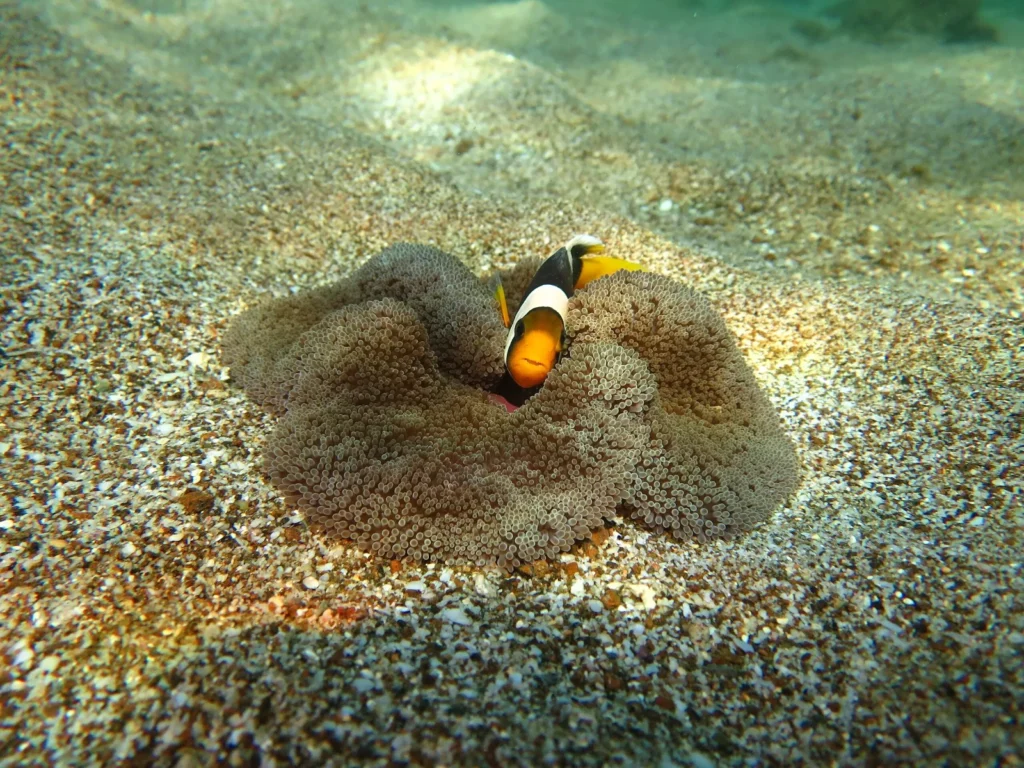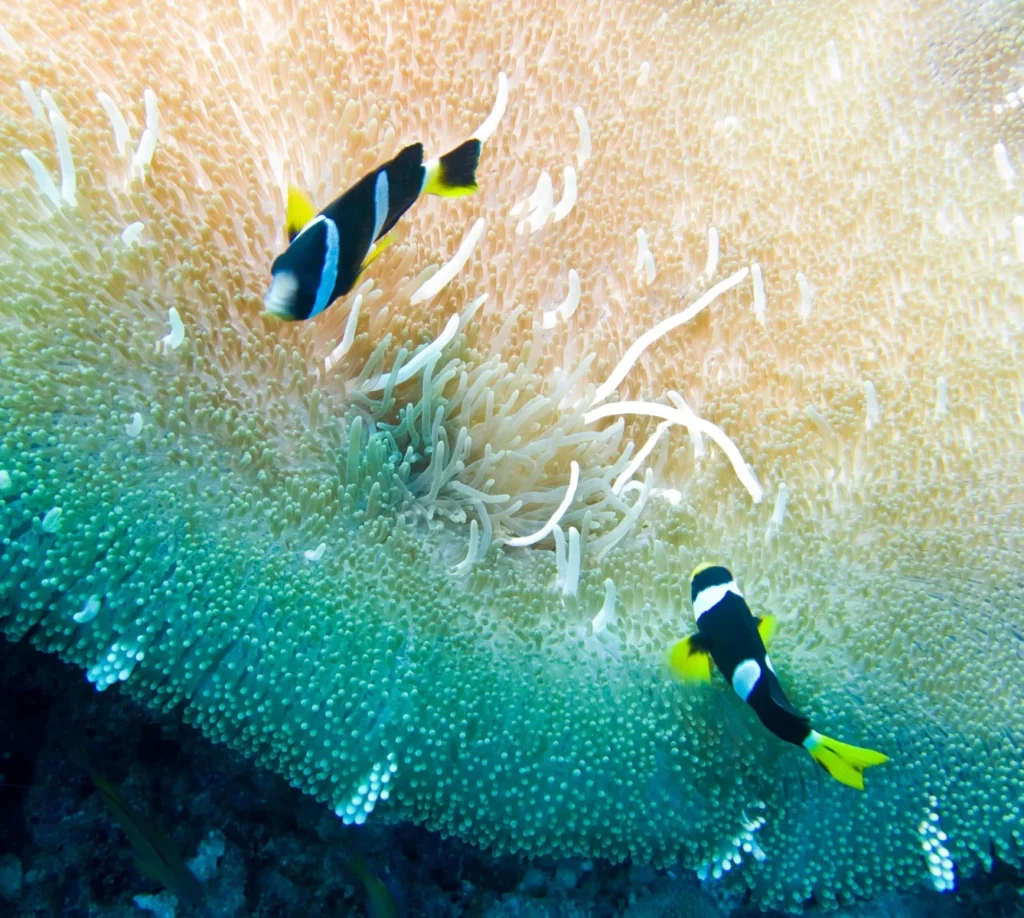Among the clownfish, one of the least common, but very attractive species is Amphiprion sebae. Unlike the classic bright orange clowns, the Sebai clown has dark coloration with contrasting white stripes and yellow finswhich gives it a unique, almost royal look.
✔ Dark brown or black body with white stripes
✔ Yellowish pelvic and caudal fins
✔ A rare species found in the waters of the Indian Ocean
✔ It lives in symbiosis with anemones, in particular Stichodactyla haddoni
This little-known but spectacular view deserves special attention. Let's learn more about it!

Scientific classification
✔ The Kingdom: Animals (Animalia)
✔ Type: Chordal (Chordata)
✔ Class: Lucheperi pisces (Actinopterygii)
✔ Row: Perch-like (Perciformes)
✔ Family: Pomacentrovye (Pomacentridae)
✔ Gender: Amphiprion
✔ View: Amphiprion sebae (Bleeker, 1853)
📌 Interesting!
Title sebae It was named after the Dutch naturalist Albertus Seba, who collected rare specimens of marine animals.
Appearance
🔹 Body shape:
✔ Oval, flattened on the sides
✔ Compact, which makes it easy to maneuver among the anemones
🔹 Color scheme:
✔ Main color – dark brown or almost black
✔ Two wide white stripesthat pass through the head and middle of the body
✔ The pelvic and anal fins have yellowish tint
✔ Caudal fin white or yellow
🔹 Sizes:
✔ Average length: 12-15 cm
✔ Maximum length: up to 17 cm
📌 Interesting!
Due to its dark coloration, this species is often confused with other clowns, such as Amphiprion clarkii, only A. sebae it has a more elegant body shape and a unique arrangement of stripes.
Range and habitat
🌍 Where does amphiprion sebae live?
✅ West Indian Ocean
Воды Waters near India, Sri Lanka, Indonesia
✅ Andaman Sea, Maldives
🔹 Living environment:
✔ Prefers shallow coral reefs and lagoons
✔ Inhabits at depths of 2-20 meters
✔ Often found among sandy bottom and coral placers
📌 Interesting!
Unlike many other clownfish, A. sebae it can occur in waters with more sand and less concentration of corals.
Symbiosis with sea anemones
🔹 How does symbiosis work?
Amphiprion lives among the tentacles of the anemone, which protects it from predators
In return, it protects the anemone from predatory fish and cleanses it of food residues
🔹 What kind of anemones does it co-exist with?
✔ Stichodactyla haddoni (Haddon anemone)
✔ Stichodactyla mertensii (Mertens ' anemone)
📌 Interesting!
Unlike other clownfish, A. sebae it does not form a symbiosis with a large number of anemones and is very picky in choosing a home.

Lifestyle and behavior
🔹 Social structure:
✔ Lives in groups: dominant female, male and several young individuals
✔ The largest individual – female, the rest are males
🔹 Defensive behavior:
✔ Quite aggressive, guards its territory
✔ Fends off even bigger rivals
🔹 Life span:
✔ In the wild: 6-10 years old
✔ In captivity: up to 12 years old
📌 Interesting!
If the dominant female dies, the largest male changes sex and takes its place.
Nutrition and environmental role
🥗 What does amphiprion sebae eat?
✅ Small zooplankton
✅ Crustaceans
, Seaweed
🔹 Environmental role:
✔ Cleanses the anemone from food residues
✔ Controls the abundance of small marine organisms
📌 Interesting!
If food is scarce, Sebai clowns can even feed on small algae growing on the reefs.
Reproduction and development
🔹 Method of reproduction:
✔ Female lays eggs 300-1000 eggs
✔ The male guards the clutch, ventilates the eggs
🔹 Development:
✔ Larvae swim in the water column up to 2 weeks
✔ Juveniles settle among anemones after metamorphosis
📌 Interesting!
The larvae are initially colorless, and the characteristic dark color appears only after settling on the reef.

Amphiprion sebae and man
🔹 Popularity in aquariums:
Редко Rare, but sometimes kept in marine aquariums
Вынос Hardy, but sensitive to environmental changes
🔹 Industrial value:
✅ Bred in nurseries for sale
📌 Interesting!
This species is less popular among aquarists due to its rarity and sensitivity to the conditions of keeping.
Species conservation and environmental threats
🔹 Population status:
✅ The species is not threatened, but its population is limited
🔹 Main threats:
Ruinuvannya coral reef destruction
Zabrudnennya ocean pollution
🔹 Security measures:
✔ Marine reserves
✔ Controlled catch
📌 Interesting!
The Sebai clown population may decline due to the loss of the anemones with which it co-exists.
Conclusion
🐠 Amphiprion sebae is a unique inhabitant of coral reefs, which is distinguished by its dark color and fastidious choice of anemones.
💡 Would you like to see this mysterious clown in the wild? 🌊✨